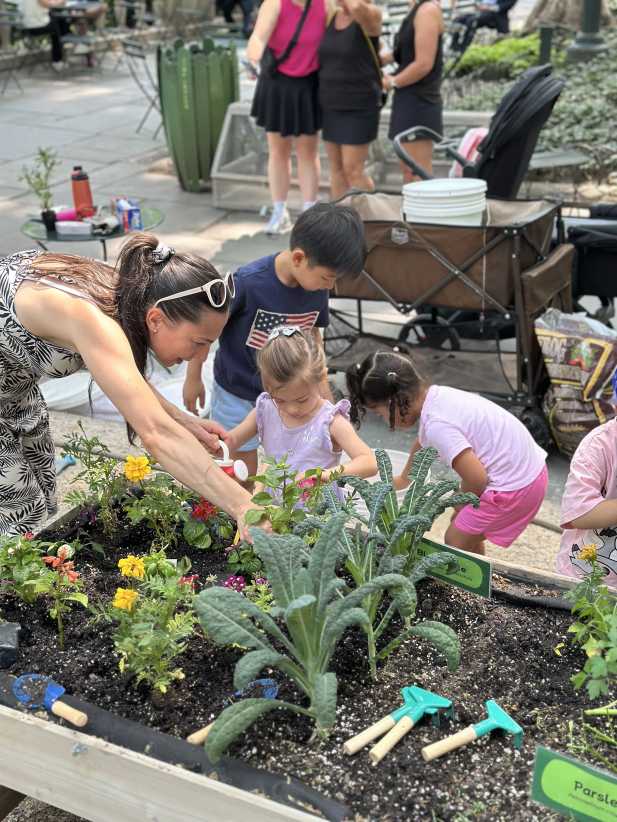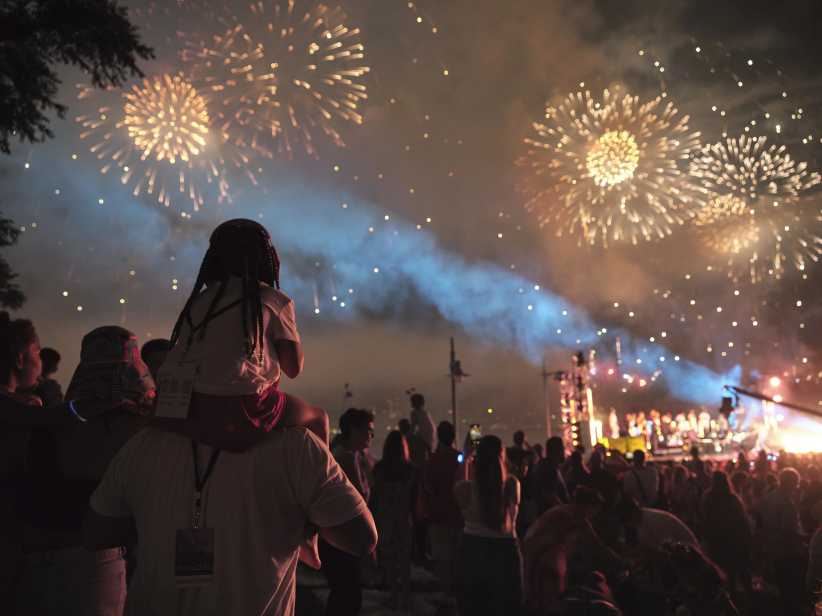[Editor’s note: for our guide to great local skiing, click here.]
Before you fret that there’s no place to ski in New York, consider yourself lucky you don’t live in Chicago. There, families go to O’Hare to ski.
Within two to three hours of this city, however, you can find dozens of downhill resorts—none are especially hard-core, but most are sufficient for getting a bit of color on your cheeks. Some will even pick you up from the bus or train station so that you don’t even need a car.
Here are a few more tips on making an expensive sport easier on your pocketbook.
Looking for places to ski in 2019, check out The Best Family-Friendly Ski Resorts in Upstate New York
Buy a Package
Beginners should opt for learn-to-ski packages that include a lift ticket, lesson and rentals—a setup that’s far more economical than purchasing each item a la carte.
Stop by grocery stores near resorts as well as city Subway and Dunkin’ Donuts for discount coupons. Some Dunkin’ Donuts have discounts at Camelback Resort in Pennsylvania–$10 off tubing, $30 off adult lift tickets and 20% off learn-to -ski or ride packages.

Parents of third and fourth graders, you’re especially in luck. I Ski NY offers free one-day lift tickets at more than 30 New York resorts when a parent buys a lift ticket. The group also offers discounts on lift tickets for parents and older kids to hook novices, but beware of blackout dates (such as February school vacation).
Rent for the Season or Buy Used Equipment
If you’re handy on the slopes and don’t need lessons (but do require skis) and plan to ski a few times before spring, consider renting gear for the season. You’ll save money if you ski more than four or five days, and you’ll save time not having to get fitted for equipment every time you go skiing.
If the slopes turn out to be a perennial family favorite, search Craigslist for used skis. Check communities near ski resorts—like in the Catskills or the Berkshires, Allentown, PA, and New Jersey suburbs—where families are likely to be looking to unload their old gear as they trade up or size up. In addition to saving money and time, you can resell skis when your little people need longer ones, or have decided snowboarding is so much cooler.
Of course, you’ll get the best deals on used goods at the end of the season, but even if you buy now and wind up paying a bit of a premium, you will still save by not having to rent for the season.
Buying is also a good long-term play when it comes to helmets. Most ski areas rent them for upwards of $10 day—a fine arrangement if you’ll only need headgear once or twice. If you aim to ski more frequently and you plan ahead, you can get good deals online. Though you can find second-hand helmets cheaper than new ones, you might still consider buying new. Previously used helmets may have unseen damage that won’t fully protect you in case of a bad spill. And they’re more hygienic.
Cut Car Rental Costs
You needn’t let a lack of wheels keep you from the slopes. Some ski areas will even fetch you from train or bus stations. Should, however, you have a family of skiers but no car, it could be more economical to rent a car than pay for separate bus or train tickets. (That said, some tour companies offer steep discounts on lift tickets when you ride with them, so calculate out the difference for your situation.)
If you do rent a vehicle, you’ll save up to 60% by picking it up at JFK rather than in Manhattan or other in-town locations. Dollar even allow free NYC drop-offs. Two tips—go early because they do run out of cars. Second, take a charged phone or a book because if they do run out, they’ll do so just as you hit the front desk.
Pick Local Resorts Offering Deals
Here are some of our favorite slopes near New York City, sorted by driving distance.
Another noteworthy ski spot is Mohawk Mountain in Cornwall, Conn. Just under two hours from the city, it offers a great deal on Saturday evening skiing. For $45, you get a 75-minute skiing or snowboarding group lesson with lift ticket and rental. Mount Peter, about 70 minutes away in Warwick, NY, offers a similar deal on Saturday nights: $55 for adults, $45 for kids.
Two resorts that deserve a lot more love from this metro area are Pennsylvania’s Blue Mountain and nearby Bear Creek Mountain Resort (each about 90 minutes from New York). Jack Frost Big Boulder is a good beginner mountain and has the perk of an indoor water park for when you want to step out of the skis and into a lighter outfit. They all participate in a Pennsylvania snowpass program, which allows 4th and 5th graders to ski for free when accompanied by a paying adult.
Take a Chartered Bus or Public Transport
If you don’t want to drive, take a look at tour companies that offer day trips. Emilio’s Ski Shop in Queens runs bus trips to New York’s Hunter Mountain and Windham as well as Vermont’s Okemo, Stratton and Mount Snow. They pick up and drop off in Queens and Manhattan. Ovrride organizes bus trips to resorts in Vermont, New York and Camelback with pickup in Brooklyn, Queens and Manhattan. NYC SnowBus offers discounted lift tickets to Gore Mountain, Mountain Creek and Whiteface when you book transit through the group. Mount Peter partners with Yehuu bus service to pick up skiiers from Manhattan. New Jersy’s Mountain Creek has a partnership with Zipcar that gives Zipcar members $10 off their lift tickets.
An even more economical choice is taking public transit to the slopes. Some ski areas are close to the bus or train stop; other resorts will pick you up at the station, such as Thunder Ridge. On weekends, the Coach USA/Shortline picks up at NY Port Authority and drops right at Tuxedo Ridge.
A more comprehensive article on public transit skiing can be found via on public television’s Channel 13.
Make it a Day Trip
Another way to cut your skiing bill is by cutting out lodging expenses. If you live within 2.5 hours or so, you could even make it a day trip and skip the hotel reservations. Depending on how hard you ski, you may want to take along a good-natured non-skier who will hang out in the lodge while you ski and then have the energy to drive you home while you knead those quads.
Hillary Chura is a reporter and writes New York Family’s Le$$er Parenting column. Follow her on Twitter @hillarychura for tips on parenting for less in New York City.















